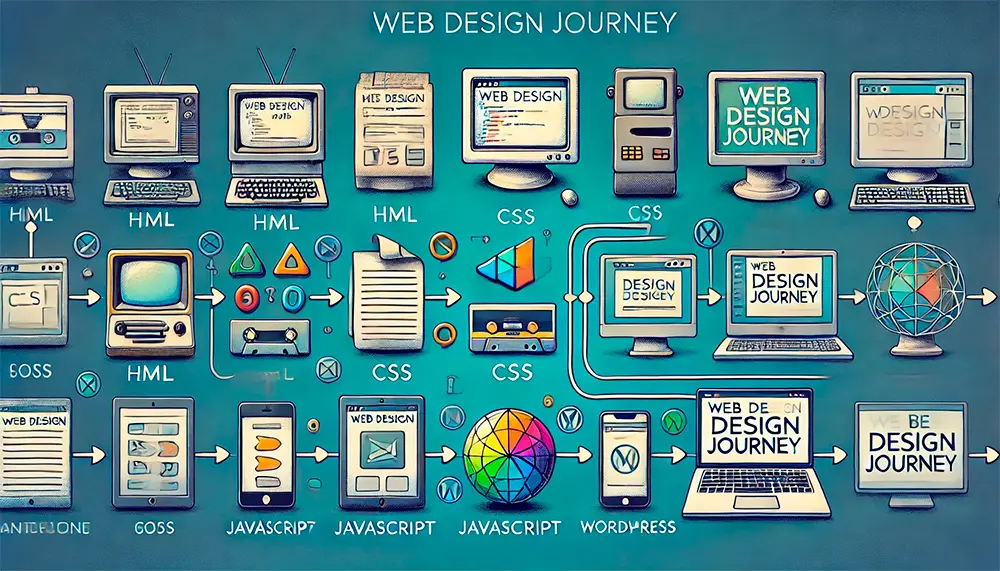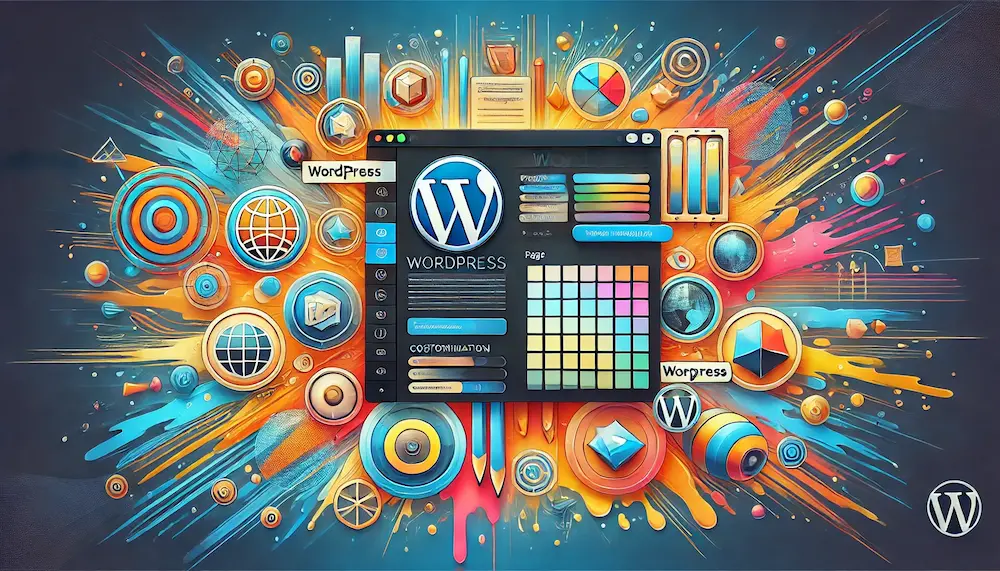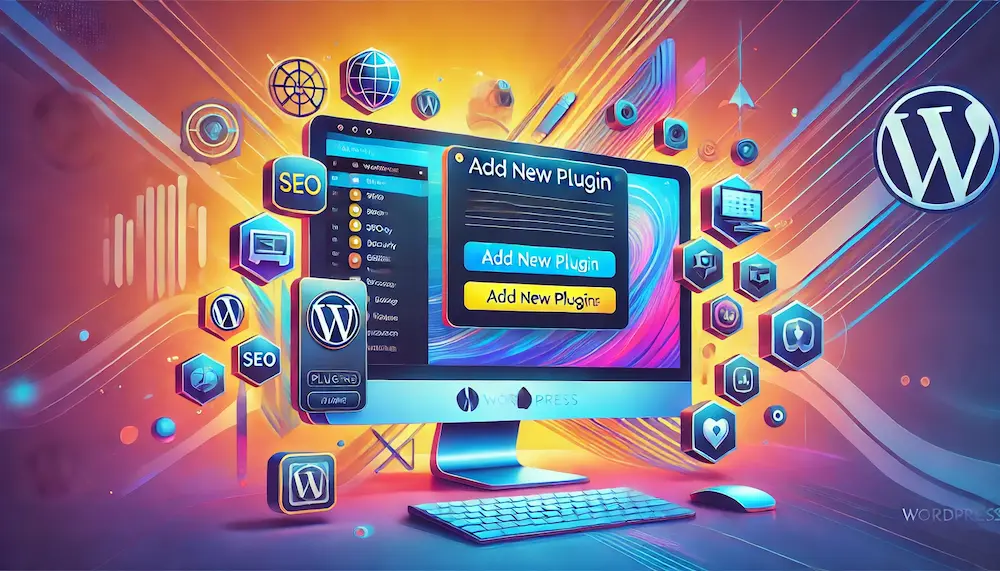A Journey Through Web Design

This article dives into the most significant turning points in the history of web design templates, offering a comprehensive understanding of how the field has evolved over the past decades. We’ll explore groundbreaking developments in CSS, JavaScript, responsive design, and even the role of AI in shaping modern websites.
Early CSS and Its Limitations

CSS (Cascading Style Sheets) was introduced in 1996 and revolutionized the way web developers separated content from design. However, the first versions of CSS were quite limited. Designers could apply basic styling rules, but advanced techniques like transitions, animations, and grid layouts were not available.
With CSS2 (released in 1998), more possibilities opened up, such as media types for print and screen, which laid the groundwork for responsive design. Even so, CSS remained constrained until CSS3, which introduced important features like Flexbox and Grid, providing much greater control over page layouts.
Benefits of CSS:
| Feature | CSS1 (1996) | CSS2 (1998) | CSS3 (1999) |
|---|---|---|---|
| Layout Control | Minimal | Basic grids, positioning | Flexbox, Grid |
| Responsive Design | Not possible | Media types for devices | Media queries |
| Animations | Not supported | Limited transitions | Full animation support |
JavaScript’s Quick Development

JavaScript, developed by Brendan Eich in 1995, revolutionized interactivity on the web. Initially known as Mocha, then LiveScript, and finally JavaScript, this scripting language allowed developers to create elements like dropdown menus, form validation, and image sliders.
With the introduction of AJAX (Asynchronous JavaScript and XML), web pages could load content without requiring a full page refresh. This led to a faster, more interactive user experience, making JavaScript indispensable for modern websites.
How JavaScript Enhanced Web Templates:
| Feature | Before JavaScript | With JavaScript |
|---|---|---|
| User Interaction | Static content only | Dropdowns, modal windows |
| Loading Content | Full page reload | Dynamic content loading (AJAX) |
| Animations | Limited (CSS only) | jQuery animations |
Fact: By the early 2000s, JavaScript had become the de facto tool for adding dynamic interactions to websites. Libraries like jQuery (released in 2006) simplified the process of building dynamic, responsive websites, making JavaScript even more accessible to developers.
The First Website Ever Created

The first website in the world was launched by Tim Berners-Lee in 1991, hosted on a CERN server. It was a simple, text-based page that explained what the World Wide Web was and how users could set up a website. There were no images or CSS, and the entire layout was basic HTML.
This milestone in web history showcased how limited early websites were in terms of design flexibility, but it also laid the foundation for the rich, interactive sites we use today.
Fun Fact:
You can still visit a replica of the first website ever created!
The Browser Wars: How They Shaped Web Design

During the late 1990s, the competition between Netscape and Internet Explorer for dominance in the web browser market led to the introduction of proprietary HTML tags and CSS properties. This made life difficult for web developers, as they had to create different versions of websites for each browser.
As a result, the World Wide Web Consortium (W3C) was established to standardize web technologies and ensure consistency across browsers. The move toward standardization laid the groundwork for modern web design templates that are compatible across all browsers.
The Rise of WordPress and Web Templates

When WordPress was first launched in 2003, it was designed as a simple blogging platform. However, thanks to its open-source nature and ease of use, it quickly evolved into a content management system (CMS) used to power a large percentage of the web. As of 2023, WordPress powers more than 40% of all websites on the internet.
One of the key reasons for WordPress’s popularity is its vast library of themes and templates, which allow non-developers to easily create professional websites. The introduction of plugin architecture made it possible to extend the functionality of templates, leading to the rise of customizable, responsive web designs.
| Year | Percentage of Websites Powered by WordPress |
|---|---|
| 2005 | 10% |
| 2010 | 25% |
| 2020 | 35% |
| 2023 | 40% |
Responsive Design’s Origins

Responsive web design was born out of the need to create websites that worked on a variety of devices. In 2010, Ethan Marcotte coined the term, introducing a new approach that used media queries and fluid grids to ensure that websites could adapt to different screen sizes.
As web design continues to evolve, the availability of ready-made templates has significantly simplified the process. For example, free responsive WordPress themes with demo content allow designers and developers to quickly launch modern, adaptive websites without starting from scratch.
Benefits of Responsive Design:
| Feature | Before Responsive Design | With Responsive Design |
|---|---|---|
| Mobile Compatibility | Separate mobile websites | One website, multiple devices |
| Development Time | Longer | Shorter |
| User Experience | Inconsistent | Consistent |
AI’s Role in Web Design

Artificial Intelligence (AI) is revolutionizing web design by automating various aspects of the process and enhancing user experience. Today, AI-powered tools can analyze user behavior, personalize content, and even suggest design changes in real-time.
One of the primary roles of AI in web design is improving user experience through personalization. AI algorithms can analyze user data and behaviors to present tailored content, layouts, and navigation paths based on individual preferences. This level of customization helps improve engagement and conversion rates, making websites more effective for businesses.
Additionally, AI is transforming web design automation. Designers can now use AI-based tools to automatically generate color palettes, font pairings, and layouts that are consistent with brand guidelines. These tools help speed up the design process, allowing developers to focus on more creative tasks while automating routine decisions.
Another growing area is AI-driven accessibility. AI can automatically test websites for accessibility standards, such as ensuring proper contrast ratios or generating alternative text for images. By improving accessibility, AI ensures that websites are usable by a broader audience, including individuals with disabilities.
Moreover, natural language processing (NLP) is being used to develop voice-activated interfaces and chatbots that offer seamless communication with users. As more people use voice search, integrating voice user interfaces into web design becomes increasingly important.
Conclusion
The evolution of web design templates reflects the rapid technological advancements that have shaped the internet. From the early static HTML pages to the dynamic, responsive, and AI-driven websites of today, each milestone has significantly improved the functionality, accessibility, and aesthetics of the web.
Understanding this journey not only helps us appreciate where we are today but also provides insight into the future of web design, where interactivity, speed, and user experience are paramount.
Latest Posts
Tags
Our WordPress Themes

129,00 € Original price was: 129,00 €.99,00 €Current price is: 99,00 €.

64,00 € Original price was: 64,00 €.49,00 €Current price is: 49,00 €.
Share:




